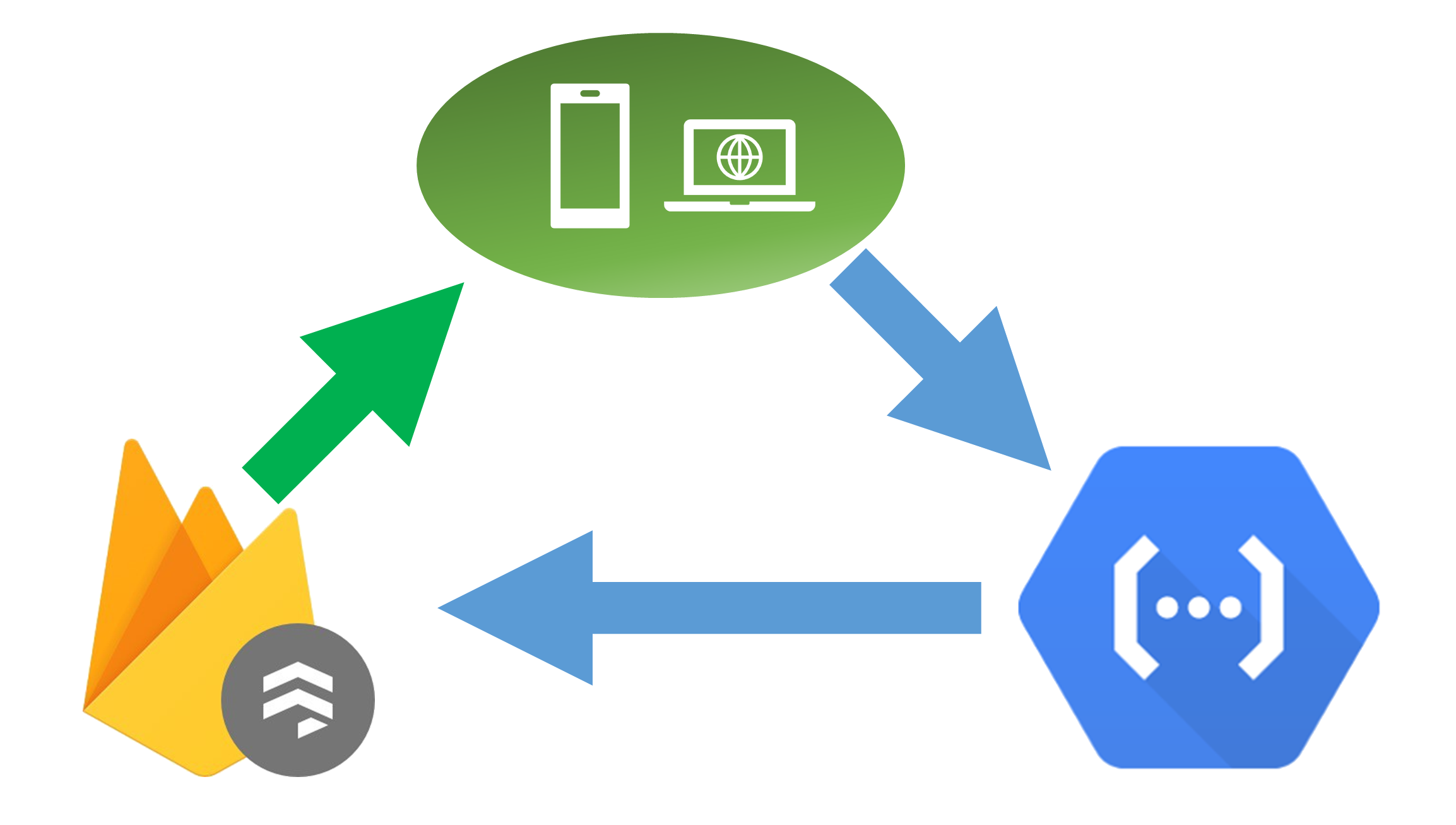# Firestore read, Functions write - a sane way of using Firebase

First time I tried building an app entirely on Firebase I couldn't get my head around it - simple things that as a backend developer were trivial required applying complicated security rules that'll put even JavaEE configuration to shame.
Regular backend programming starts from the assumption that a client
isn't allowed to do anything and gradually you add operations that
a user is allowed to do.
With Firebase it's the other way around, if a user can read a
document he can read all of it and if he can write to a document
he can by default do anything to it. Programming in Firebase is
slowly adding exceptions to what a user can do.
In essence Firebase is about blacklisting what a user can't do while server programming is about whitelisting what a user can do.
That's not a model I'm comfortable with and it's a hell on security.
But there's a sane way to work with Firestore (or Firebase'd old database) that won't make you pull your hairs out at every corner and isn't really mentioned much.
Read from Firestore directly, write to it with Functions
The solution is simple - never write directly to Firestore. Instead use Functions to write to the store with any arbitrary rule you want and keep your security rules just about reading.
# Drawbacks of not writing directly to Firestore
No offline writes: one of the great advantages for using firebase is that it takes care of syncing your data for you and can work offline. If you don't write directly to the database the Firebase SDK can't handle offline for you.
That might not matter much though since transactions also can't be done offline and with even simple workflows they can become the majority of actions.No immediate update: using the Firebase SDKs if you write directly to the datastore the client doesn't have to wait for the server to receive or acknowledge the requests and changes happen immediately. When using functions you have to wait for data to propagate from the server back to your client.
Like with offline this doesn't work with transactions and there's also many times where the correct behaviour is to wait for acknowledgement.Extra charge for using functions: since we now add a Functions api call for each write action we want to do, Firebase will charge for Function access as well as Database/Firestore access.
This can range from double your cost for write operations if you write to single document for each function invocation to inconsequential if you write rarely and when you do you read and write to multiple documents.
# A few gotchas and recipes
# Displaying updates after function calls
When using Functions to update data a function call can finish and return successfully before the data propagates back to the client when using snapshot listeners.
This can cause a delay on the UI - where the action finishes successfully but it's effects on the UI take time to show.
There are 2 ways to solve this:
- Instead of waiting for the function call to finish successfully you can wait for the data to propagate o the client before showing success on the UI.
- When a function finishes it should return the documents that changed, and then those changes can be applied manually to the ui. When the changes propagate via listeners, nothing will happen since the data is the same.
# Using custom claims for permissions
Since we use Functions for all our updates, we can also add custom claims to users (see how here (opens new window)) and use those claims in security rules. It's great for adding permissions to users such as admins or joining a group (note though that custom claims are limited to 1000 bytes)